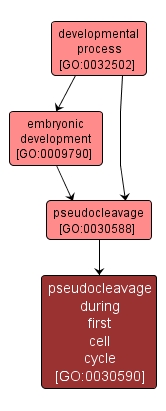GO TERM SUMMARY
|
| Name: |
pseudocleavage during first cell cycle |
| Acc: |
GO:0030590 |
| Aspect: |
Biological Process |
| Desc: |
A process that occurs during the first cell cycle in an embryo, in which anterior cortical contractions culminate in a single partial constriction of the embryo called the pseudocleavage furrow. An example of this process is found in nematode worms. |
|

|
INTERACTIVE GO GRAPH
|














